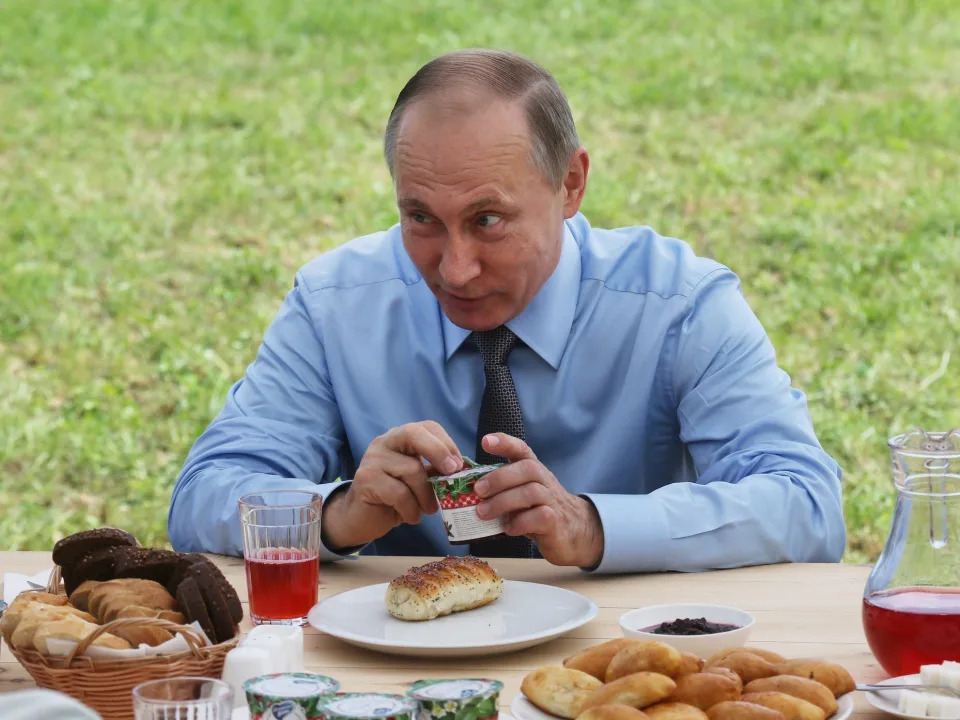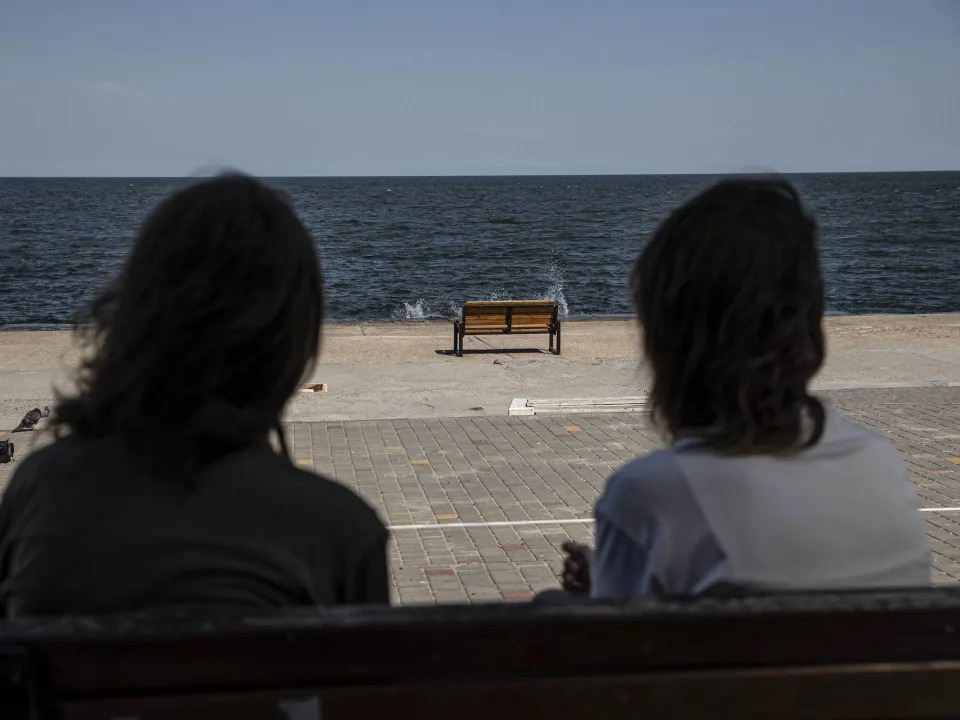Insider
Putin is threatening poor countries with starvation as the ‘next stage’ in his ruthless Ukraine war, experts warn
John Haltiwanger – July 5, 2022

Putin is threatening poor countries with starvation as the ‘next stage’ in his ruthless Ukraine war, experts warn
Russia’s war in Ukraine is fueling a global food crisis, which experts say is a deliberate tactic.
Ukraine is one of Europe’s biggest wheat producers, but the war has made exporting extremely difficult.
Experts say Putin is willing to starve poorer countries to create a crisis that paves the way for Russia’s victory in Ukraine.
Russia’s invasion of Ukraine is exacerbating a global food crisis, and experts say this is part of a deliberate effort by the Kremlin to stoke famine and pressure the Western coalition that’s supporting Ukraine’s government, an effort the EU has decried as a war crime.
“Russia has a hunger plan. [Russian President] Vladimir Putin is preparing to starve much of the developing world as the next stage in his war in Europe,” Timothy Snyder, a Yale historian and expert on authoritarianism, tweeted on Saturday, adding that Moscow is “planning to starve Asians and Africans in order to win its war in Europe.”
“This is a new level of colonialism,” Snyder added.
Ukraine, widely described as Europe’s breadbasket, is a major exporter of wheat, sunflower oil, and corn. It provides roughly 10% of the globe’s wheat exports, 15% of corn exports, and close to half of the world’s sunflower oil. But the war in Ukraine — particularly Russia’s blockade of Black Sea ports — has thrown a wrench in its export business. This is leading to a shortage in food supply and skyrocketing prices in many countries that could plunge tens of millions more people into starvation, experts are warning.
Roughly 18 million tons of grain are sitting in storage in Ukraine as a result, and the country’s farmers are expected to harvest 60 million additional tons by the fall, according to the UN Food and Agriculture Organization (FAO). “Ukraine’s farmers are feeding themselves and millions more people around the world,” Rein Paulsen, director of the FAO’s emergencies and resilience office, said this week, per Reuters. “Ensuring they can continue production, safely store and access alternative markets is vital to strengthen food security within Ukraine and ensure other import-dependent countries have sufficient supply of grain at a manageable cost,” Paulsen added.
The UN has warned that the conflict in Ukraine could make an additional 47 million people food insecure in 2022. Countries in Africa and the Middle East that rely heavily on Ukrainian grain are especially at risk. Together, Russia and Ukraine provide over 40% of Africa’s wheat supply.
Indeed, Russia also accounts for a massive portion of the world’s wheat and sunflower oil. Russia continues to export wheat and other commodities despite the Ukraine war, but has signaled it’s being selective about who will receive its supply. “We will only be supplying food and agriculture products to our friends,” former Russian President Dmitry Medvedev, a close ally of Putin and deputy chairman of Russia’s Security Council, said April 1 on Telegram. Similarly, Putin in early April said, “We will have to be more careful about food supplies abroad, especially carefully monitor the exports to countries which are hostile to us.”
Snyder said Putin’s “hunger plan” is designed to work on three levels, including as a larger effort to “destroy the Ukrainian state” by cutting off exports. It’s also an attempt to foment instability in the EU by generating “refugees from North Africa and the Middle East, areas usually fed by Ukraine.”
“Finally, and most horribly, a world famine is a necessary backdrop for a Russian propaganda campaign against Ukraine. Actual mass death is needed as the backdrop for a propaganda contest,” Snyder said. “When the food riots begin, and as starvation spreads, Russian propaganda will blame Ukraine, and call for Russia’s territorial gains in Ukraine to be recognized, and for all sanctions to be lifted.”
Rita Konaev, a Russian military expert, told Insider that Russia employed similar tactics in the war in Syria. “They’ve openly sought to destabilize Syria, neighbors, and Europe through the outpour of refugees — knowing that they would push the envelope towards ending the war in Syria and accepting the future of Syria with Assad. It’s part of their playbook,” Konaev said of the Russians.
‘The Russian invasion into Ukraine exacerbated an already bad situation’

Russia’s military offensive in Ukraine began as the global economy was still dealing with the lingering impact of the COVID-19 pandemic, which disrupted supply chains and raised fuel prices. In 2020, the first year of the pandemic, as many as 811 million people globally faced hunger.
“The Russian invasion into Ukraine exacerbated an already bad situation” and it’s “affecting the entire global community,” Ertharin Cousin, who served as executive director of the UN World Food Programme from 2012 to 2017, told Insider.
“There are some countries that are more affected than others, particularly those in Sub-Saharan Africa, where they are net importers from Ukraine. So, this has a direct effect on their ability to purchase food — where their source of commodities is no longer available to them. But because of the effect that the lack of those grains in the global food system has on the escalating prices of food for the entire world, it affects us all,” Cousin said.
In lower-income countries like Somalia, the effects of Russia’s war in Ukraine on the food supply are already being felt. Skyrocketing prices for grain and other commodities are pushing Somalia to the brink of famine.
“The crisis is worse now than anytime in my lifetime working in Somalia for the last 20 years, and it is because of the compounded effect of the war in Ukraine,” Mohamud Mohamed Hassan, Somalia country director for the charity Save the Children, recently told the Washington Post. “Communities are at a breaking point.”
“Many people would have survived if the Ukrainian crisis was not there and food was coming in,” Hassan told the Post, adding, “At least food prices would have been stable, and food would have been available.”
‘Russia attacked Ukraine…that is what created this problem’

Ukrainian President Volodymyr Zelenskyy has explicitly blamed the growing food crisis on Russia. “If it was not for the Russian war against Ukraine, there simply would be no shortage in the food market,” Zelenskyy said in a remote address to the African Union in June. “If it was not for the Russian war, our farmers and agricultural companies could have ensured record harvests this year.”
Josep Borrell, the EU’s foreign policy chief, has described Russia’s blockade on Ukrainian food exports as a “real war crime.”
“You cannot use the hunger of people as a weapon of war,” Borrell said last month in Luxembourg.
As Kyiv and its Western allies accuse the Kremlin of weaponizing food and stealing Ukrainian grain, Putin has denied that Russia is blocking grain exports from Ukraine.
The Kremlin has blamed the brewing food crisis on the West, pointing to the harsh sanctions it’s imposed on Moscow over the war. The Russian government has offered safe passage to ships carrying grain in exchange for the lifting of sanctions. Meanwhile, Russia has also blamed Ukrainian naval mines in the Black Sea for the situation, which Kyiv is reluctant to remove because it would make Ukraine’s ports more vulnerable as the Russian onslaught continues.
When it comes down to it “the war is to blame” for the escalating food crisis, Cousin said, adding, “Russia’s occupation of the Black Sea has a direct effect on the ability to move food.”
“Russia’s arguing that they can’t move their fertilizer or grain because of the sanctions. If you listen to the parties involved in this — and I’m your audience — I can see where there are challenges from all sides. But we can’t ignore the fact that it’s not about whether the grain is moving — it’s about the fact that Russia attacked Ukraine. And that is what created this problem overall,” Cousin said.
At the recent G7 summit, leaders pledged $4.5 billion to help address the global food crisis linked to Russia’s invasion. As countries move to address the situation, Cousin said it’s important for governments “to avoid the mistake of thinking they can protect their own populations from food insecurity by implementing export bans or export restrictions — that only further exacerbates the challenges on the global food system, particularly for net importing countries during a time when they are so dependent on that global food system.”
Cousin underscored that it’s key for the global community to take “preemptive actions” now, warning that “what is today an accessibility problem could become an availability problem by this time next year.”








